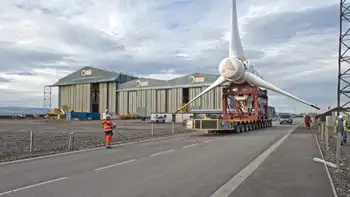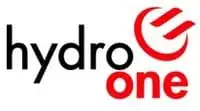Con Ed’s vision of a nuclear future – circa 1962
By New York Times
Electrical Testing & Commissioning of Power Systems
Our customized live online or in‑person group training can be delivered to your staff at your location.

- Live Online
- 12 hours Instructor-led
- Group Training Available
A handful of atomic plants had opened across the country, with many more in the pipeline. Across the ocean, a depressed coal town in the Japanese prefecture of Fukushima had welcomed overtures from Tokyo Electric to build a nuclear generating station, and the utility was surveying the site.
Thirty miles north of New York City, the Consolidated Edison CompanyÂ’s Indian Point plant, the first fully private nuclear power plant to be licensed, had just achieved a sustained chain reaction and was about to go online.
But Con Ed had bigger plans. On Dec. 10, it applied to the Atomic Energy Commission to build the worldÂ’s largest nuclear plant, with a capacity of a thousand megawatts, more power than all the other atomic plants in the United States put together.
The plant, Con Ed said, would rise on the East River waterfront in Long Island City, Queens, less than two miles from Times Square.
The idea of siting a mammoth nuclear generator in the heart of New York City seems preposterous now, and increasingly so.
At the time, while controversial, it was not unthinkable.
Around the world, governments were contemplating nuclear plants in or near big cities, weighing the remote risk of catastrophe against the higher long-run cost and air pollution associated with conventional plants: the unknown devil against the known.
And the world watched as the yearlong struggle, now all but forgotten, over Con EdÂ’s proposed Ravenswood nuclear plant played out.
On a snowy night in February 1963, more than 250 people crowded into a church auditorium a few blocks from the plant site in the middle-and-working-class neighborhood of Ravenswood for the first community meeting on the project. The Queens borough president, Mario J. Cariello, set the tone, thundering, to cheers and applause, “I was opposed to this project, I am opposed, and I will continue in that stand until convinced otherwise.”
If Con Ed was cowed, it did not let on. In April, the utility’s chairman, Harland C. Forbes, told a Congressional committee that “one or two people have raised some question about the genetic effects of radiation and so forth.” Such concerns were “rather silly,” Mr. Forbes said.
“It seems to me,” he said, “that the public in general has reached the point where it has accepted nuclear plants as a matter of course.”
But a former chairman of the Atomic Energy Commission, David E. Lilienthal, told the same committee, “I would not dream of living in the borough of Queens if there were a large atomic power plant in that region, because there is an alternative — a conventional thermal power plant as to which there are no risks.”
Con Ed officials noted that there were already two large oil-fired plants at its Ravenswood site building another would worsen air pollution. If nuclear power were to compete with conventional power, Con Ed said, plants had to be built in the areas they served. Building a nuclear reactor the size of Ravenswood at Indian Point, the utility said, required transmission lines that would tack $75 million onto the reactorÂ’s $175 million price, an increase of 40 percent.
In May, the Democratic leader of the City Council introduced a bill to ban commercial nuclear power in New York City. At a hearing on the bill, six women and a man picketed outside. One carried a sign that read, “Atomic power plants increase the toll of deformed, stillborn and mentally retarded children.”
In June, the City Council heard more than seven hours of testimony on the ban. A city utility commissioner called it “repressive and shortsighted.” The chairman of the Atomic Energy Commission, Glenn T. Seaborg, questioned the measure’s legality. A state senator from Queens, Seymour R. Thaler, told the Council, “The mind of man has not yet invented an accident-proof piece of mechanical equipment.”
All told, 29 people testified against the ban 30 testified in favor. Out in City Hall Plaza, the growing crowd of picketers now had a name: Canpop, the Committee Against a Nuclear Power Plant in New York City.
In Washington, the Atomic Energy Commission harbored doubts. In August, it sent Con Ed a list of safety questions about the plant. The commission’s 1962 siting guidelines were deliberately ambiguous. On one hand, they called for a one-mile unpopulated zone around a nuclear plant, and low population density within a 16-mile radius. More than five million people lived or worked within five miles of the Ravenswood site. But the guidelines also noted that applicants were “free — and indeed encouraged” to argue for exceptions.
Con Ed had boasted that the shielding for its pressurized water reactor, featuring a concrete igloo 167 feet high and 7 feet thick, encased in another shell of thick concrete, could withstand a complete meltdown or a jetliner crash.
The plant’s neighbors remained unimpressed. “We think one of the threats is a decline in property values, and that is a factor,” Irving Katz, a founder of Canpop and a biochemist, told The Times in an October 1963 article. “But really it comes down to this — when we look out of our windows and see those two stacks up there, we are frightened. And our women are frightened.”
On Dec. 9, Con Edison told the commission it would modify its plans to include “additional engineering safeguards.”
Instead, on Jan. 6, 1964, Con Ed withdrew its Ravenswood application. It said it had made arrangements to buy hydroelectric power from Canada instead, a move that “had absolutely nothing to do with the public opposition to the proposal.” The cost of building transmission lines was suddenly not a factor.
Con Ed was not done trying to build a nuclear plant in the city, though. In 1968, it floated a plan to build an underground reactor — “because it would provide the nth degree of safety” — beneath an abandoned hospital site at the south end of Welfare Island, now Roosevelt Island, a few hundred feet from the Ravenswood plants and that much closer to the East Side of Manhattan. It went nowhere.
In 1970, the utility proposed nuclear plants on man-made islands several miles off Coney Island and Staten Island, built of solid waste and each crowned with four thousand-megawatt reactors.
That proposal, too, was blocked by public opposition. But J. Samuel Walker, a former historian for the Nuclear Regulatory Commission, said that neither one ever had a chance of getting approved.
“Ravenswood was kind of a test case,” Mr. Walker said. After that, the atomic commission “agreed on kind of an informal rule. They wouldn’t allow a plant any closer to a city than Indian Point.”











